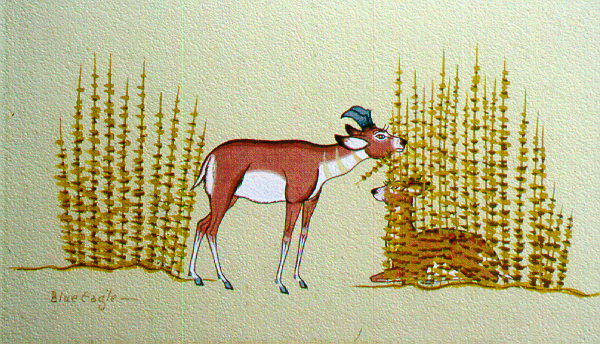Story 3: Origin of Animals
At the beginning of the world there were no differences in the appearance of people and animals; they all looked the same and spoke the same language. After a while they became too numerous and there was not enough food. A council was held and the chiefs determined that some should become animals and live apart from the people and be hunted by them for food. Some of the people took on the form of bears by rolling in ash. Long pieces of white stone were put upon their feet for claws and in their mouth for teeth. They were given ten lives. When killed the first time, the second life was to arise from the blood that was spilled upon the ground and so on through the other lives up to the tenth. During the first life bears were not fierce, but as often as they were killed and recreated they would become more and more fierce, until, when they came to their tenth life, they would fight and even eat people. Some others took the form of buffalo by rolling in the tall grass. They, too, were given ten lives, and after the buffalo all other animals were made.
Some animals, like Coyote, are special. They can act like people and often they play important roles as members of the human community. Coyote plays important roles in many stories, and, as we have already seen, is responsible for creation events and the origins of important cultural practices. At the same time, Coyote usually achieves these ends through trickery or other anti-social means, bringing upon himself the retribution of his community. These elements of Coyote's behavior are all parts of the next story in this series. |
||
 |

|
